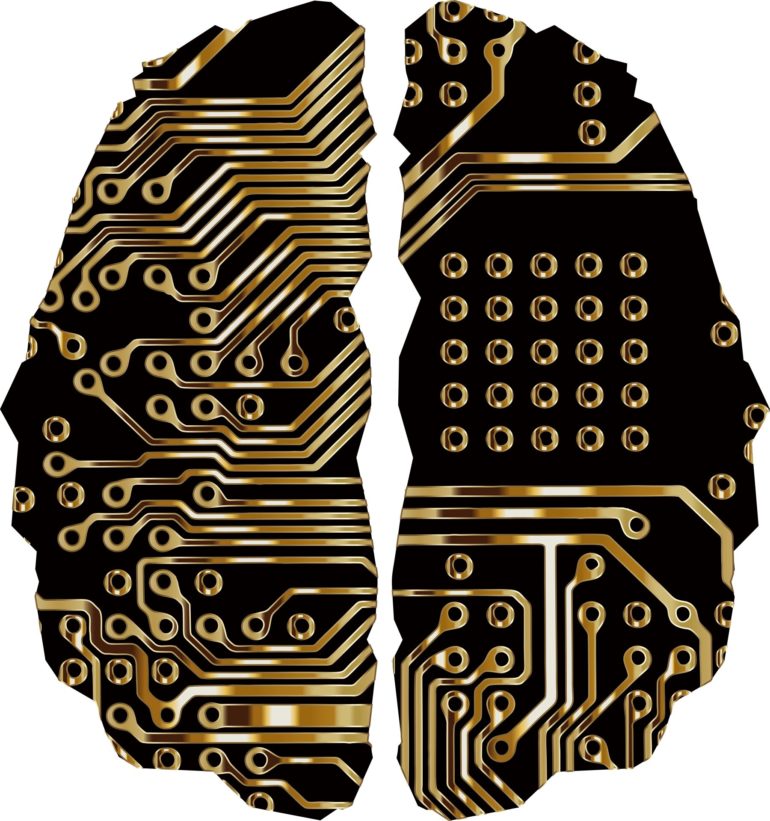Getting computers to “think” like humans is the holy grail of artificial intelligence, but human brains turn out to be tough acts to follow. The human brain is a master of applying previously learned knowledge to new situations and constantly refining what’s been learned. This ability to be adaptive has been hard to replicate in machines.
Now, Salk researchers have used a computational model of brain activity to simulate this process more accurately than ever before. The new model mimics how the brain’s prefrontal cortex uses a phenomenon known as “gating” to control the flow of information between different areas of neurons. It not only sheds light on the human brain, but could also inform the design of new artificial intelligence programs.
“If we can scale this model up to be used in more complex artificial intelligence systems, it might allow these systems to learn things faster or find new solutions to problems,” says Terrence Sejnowski, head of Salk’s Computational Neurobiology Laboratory and senior author of the new work, published on November 24, 2020, in Proceedings of the National Academy of Sciences.
The brains of humans and other mammals are known for their ability to quickly process stimuli—sights and sounds, for instance—and integrate any new information into things the brain already knows. This flexibility to apply knowledge to new situations and continuously learn over a lifetime has long been a goal of researchers designing machine learning programs or artificial brains. Historically, when a machine is taught to do one task, it’s difficult for the machine to learn how to adapt that knowledge to a similar task; instead each related process has to be taught individually.
In the current study, Sejnowski’s group designed a new computational modeling framework to replicate how neurons in the prefrontal cortex—the brain area responsible for decision-making and working memory—behave during a cognitive test known as the Wisconsin Card Sorting Test. In this task, participants have to sort cards by color, symbol or number—and constantly adapt their answers as the card-sorting rule changes. This test is used clinically to diagnose dementia and psychiatric illnesses but is also used by artificial intelligence researchers to gauge how well their computational models of the brain can replicate human behavior.
Previous models of the prefrontal cortex performed poorly on this task. The Sejnowski team’s framework, however, integrated how neurons control the flow of information throughout the entire prefrontal cortex via gating, delegating different pieces of information to different subregions of the network. Gating was thought to be important at a small scale—in controlling the flow of information within small clusters of similar cells—but the idea had never been integrated into models through the whole network.
The new network not only performed as reliably as humans on the Wisconsin Card Sorting Task, but also mimicked the mistakes seen in some patients. When sections of the model were removed, the system showed the same errors seen in patients with prefrontal cortex damage, such as that caused by trauma or dementia.
“I think one of the most exciting parts of this is that, using this sort of modeling framework, we’re getting a better idea of how the brain is organized,” says Ben Tsuda, a Salk graduate student and first author of the new paper. “That has implications for both machine learning and gaining a better understanding of some of these diseases that affect the prefrontal cortex.”
If researchers have a better understanding of how regions of the prefrontal cortex work together, he adds, that will help guide interventions to treat brain injury. It could suggest areas to target with deep brain stimulation, for instance.
“When you think about the ways in which the brain still surpasses state-of-the-art deep learning networks, one of those ways is versatility and generalizability across tasks with different rules,” says study coauthor Kay Tye, a professor in Salk’s Systems Neurobiology Laboratory and the Wylie Vale Chair. “In this new work, we show how gating of information can power our new and improved model of the prefrontal cortex.”
The team next wants to scale up the network to perform more complex tasks than the card-sorting test and determine whether the network-wide gating gives the artificial prefrontal cortex a better working memory in all situations. If the new approach works under broad learning scenarios, they suspect that it will lead to improved artificial intelligence systems that can be more adaptable to new situations.
Neural pathway crucial to successful rapid object recognition in primates
More information:
Ben Tsuda et al, A modeling framework for adaptive lifelong learning with transfer and savings through gating in the prefrontal cortex, Proceedings of the National Academy of Sciences (2020). DOI: 10.1073/pnas.2009591117
Citation:
Simulated system could help develop better artificial intelligence, treatments for brain disorders (2020, December 16)
retrieved 16 December 2020
from https://techxplore.com/news/2020-12-simulated-artificial-intelligence-treatments-brain.html
This document is subject to copyright. Apart from any fair dealing for the purpose of private study or research, no
part may be reproduced without the written permission. The content is provided for information purposes only.



